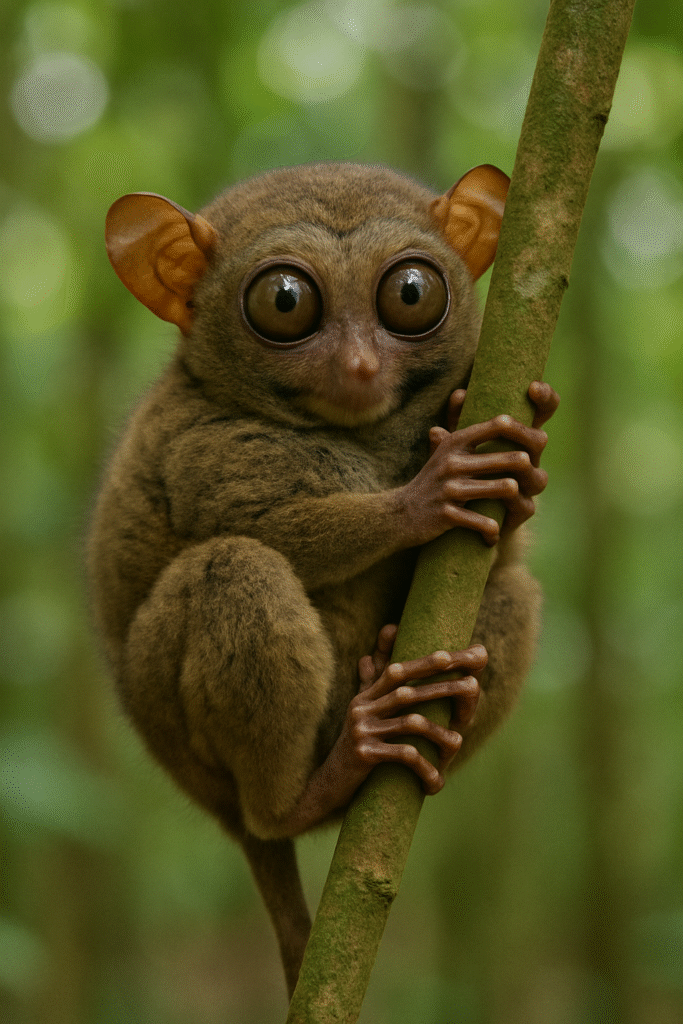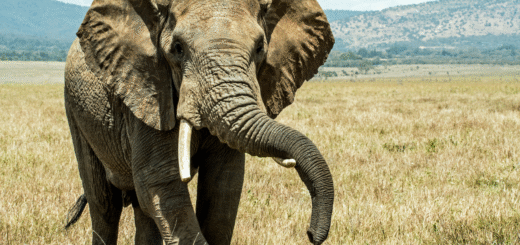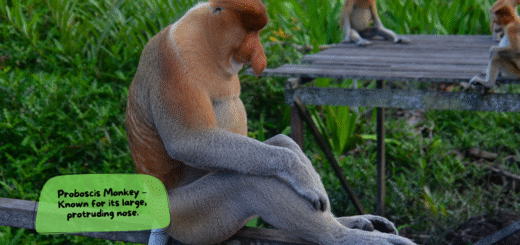Philippine Tarsier: The Tiny Primate with Giant Eyes and Ancient Origins
Introduction: Meet the Enigmatic Philippine Tarsier
The Philippine Tarsier (Carlito syrichta) is a mysterious and mesmerizing creature found only in the Philippines. Known for its oversized eyes, ability to leap great distances, and almost alien-like appearance, the tarsier is a symbol of both natural wonder and fragility. As one of the world’s smallest primates, it plays a unique role in the biodiversity of Southeast Asia and draws curious travelers and scientists from around the globe.

Physical Features: Small But Striking
Despite measuring only about 3.5 to 6 inches (9 to 16 cm) tall, the Philippine Tarsier is impossible to miss.
- Eyes: Their eyes are disproportionately large — each eye is roughly the same size as their brain!
- Tail: Their tails are long and slender, aiding balance during powerful leaps.
- Fingers and toes: Equipped with suction-cup-like pads for gripping trees with ease.
- Weight: A mere 80 to 160 grams — lighter than an average smartphone.
Their adorable yet haunting appearance often sparks fascination at first sight.
Habitat and Distribution
The Philippine Tarsier is endemic to the Philippines, mainly found in:
- Bohol
- Leyte
- Samar
- Mindanao
They inhabit dense forests, particularly secondary forests and areas with lowland vegetation. These nocturnal primates are extremely sensitive to environmental changes and human interference.
Behavior and Lifestyle
- Nocturnal: Most active at night, tarsiers hunt and travel under the cover of darkness.
- Solitary and territorial: Tarsiers prefer solitude and mark their territory using scent.
- Communication: They use ultrasonic vocalizations, inaudible to human ears, to communicate — an advanced trait for such a small primate.
Diet: Carnivore on a Tiny Scale
Unlike most primates, the Philippine Tarsier is completely carnivorous, feeding on:
- Insects
- Spiders
- Lizards
- Small birds
They are sit-and-wait predators, launching sudden attacks with remarkable speed and accuracy.
Reproduction and Lifespan
- Breeding: Females usually give birth to a single offspring once a year.
- Gestation period: About 6 months.
- Young tarsiers: Born fully furred, with open eyes, and can cling to their mothers immediately.
In the wild, tarsiers can live up to 12 years, but their lifespan is often shorter in captivity due to stress and inappropriate conditions.
Conservation Status
The Philippine Tarsier is listed as “Near Threatened” on the IUCN Red List due to:
- Deforestation
- Habitat fragmentation
- Illegal pet trade
- Tourism stress
Efforts to protect them include sanctuaries like the Philippine Tarsier Foundation in Bohol, where strict no-touch policies are enforced to minimize stress.
Cultural and Ecotourism Significance
Tarsiers are more than just animals — they are part of Filipino cultural identity. They’ve appeared in folklore, stamps, coins, and ecotourism campaigns. Responsible tourism now plays a major role in both education and conservation.
Fun Facts About the Philippine Tarsier
- A tarsier can rotate its head 180 degrees — like an owl!
- Their eyes do not move in the sockets, so they rely on head movements.
- They’ve existed for over 45 million years, making them living fossils.
- Despite their cuteness, stress can literally kill them — making handling or loud noises dangerous.
Conclusion: Protecting the Forest’s Silent Watcher
The Philippine Tarsier is a living relic, a one-of-a-kind primate that reminds us of the incredible biodiversity tucked away in the Philippines’ forests. As we move forward, it’s our responsibility to ensure this remarkable species doesn’t vanish into myth. Through sustainable tourism, education, and conservation, we can help keep their big eyes watching over the jungle for generations to come.








